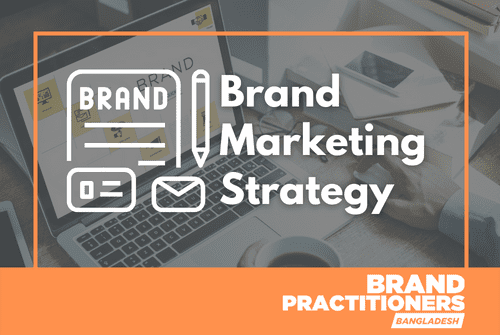Brand Marketing Strategy: Full Story
Brand marketing strategy is key to success the best possible results from your marketing activities. This means setting a goal and devising a plan to achieve it, executing the plan, and measuring the results to optimize for the future. Here is a closer look at brand marketing strategy and how to do it.

What is Branding?
Branding is the use of a name, term, design, symbol, or other feature to identify a product or service and distinguish it from those of other producers. Branding can be applied to the entire corporate identity, including the logo, name, tagline, and visual appearance. It is also often applied to individual products, such as clothing, accessories, or even individual components. Branding is a key marketing strategy, and can be used to create a unique selling proposition for a product or service. It can also help to build customer loyalty and increase brand awareness.
What is Marketing?
Marketing is the process of creating value for a company through the creation and distribution of products or services. It is the art of selling products or services to customers, taking into account their needs and wants. Marketing also encompasses the process of managing customer relationships, in order to retain and grow a company’s customer base.
Marketing is about understanding the needs and wants of customers and then creating a product or service that meets those needs. However, effective marketing is much more complex than that. It involves a deep understanding of customer behavior, including how customers make decisions and what motivates them. It also requires an understanding of the competitive landscape, in order to create a unique value proposition that will appeal to customers.
Marketing is an essential function for any company that wants to succeed in today’s competitive marketplace. By understanding customers and creating products or services that meet their needs, companies can create loyal customers who will continue to do business with them.
Branding VS Marketing
There is a lot of confusion when it comes to the difference between branding and marketing. In short, branding is the overall image and identity of a company or product, while marketing is the process of promoting and selling that company or product.
However, there is a lot more to it than that. Branding is about creating an emotional connection with customers, while marketing is about creating a logical connection. Marketing is about getting people to understand what you’re selling and why they need it, while branding is about getting people to feel something when they see your company or product.
Branding is about building trust and loyalty, while marketing is about generating leads and sales. Marketing is about the numbers, while branding is about the connection.
In the end, both branding and marketing are important, and they work best when used together.
What is a brand marketing strategy?
A brand marketing strategy is a plan that outlines how a company will market its products or services. The strategy should take into account the company’s goals, target audience, budget, and resources. It should also consider the competitive landscape and identify opportunities and threats. The brand marketing strategy should be designed to build and maintain a strong brand identity. It should be flexible and adaptable, as the needs of the company and the market change over time.
How to build a brand marketing strategy?
Best brand marketing strategy will vary depending on the specific goals and objectives of the business. However, there are some key steps that all businesses should take when creating a brand marketing strategy.
- First, businesses should conduct market research to gain a better understanding of their target audience. This will help them to identify the key messages that they need to communicate to their target market.
- Once they have a good understanding of their target market, businesses should then develop a unique selling proposition (USP). This is what will make their brand stand out from the competition.
- Once they have developed their USP, businesses should create a brand identity that reflects their USP. This includes creating a logo, choosing the right colors and fonts, and developing a tagline.
- Finally, businesses should create a brand marketing strategy that includes various marketing channels such as social media, content marketing, and email marketing. They should also consider using promotional items such as branded t-shirts and custom pens to help get their brand name out there.
Brand Marketing Strategy 2023
1. Long-term influencer-brand relationships: Long-term influencer-brand relationships are built on trust, respect and a shared commitment to delivering the best possible results for the brand. When these relationships are strong, they can be hugely beneficial for both parties involved. The influencer can provide valuable insights and feedback that can help the brand to improve its products and services, while the brand can provide the influencer with a platform to reach a wider audience. These relationships can be extremely beneficial in the long term, but they need to be nurtured and carefully managed in order to be successful.
2. Live streaming and video-based content: Live streaming is a growing trend in the world of online content. More and more people are tuning in to watch live broadcasts of their favorite shows, events, and personalities. This type of content is often seen as more engaging and personal than traditional, recorded videos.
Many platforms are now offering live streaming capabilities, including YouTube, Facebook, and Twitch. This has made it easier than ever for content creators to reach a wide audience. And with the rise of mobile devices, people are able to watch live streams anywhere, anytime.
This trend is likely to continue to grow in popularity, as more people discover the benefits of live streaming. For content creators, it is a great way to connect with fans and build a following. And for viewers, it is a way to experience events and shows in a more personal and intimate way.
3. User-generated content: User-generated content (UGC) is a term used to describe any type of content that has been created and published by users of a specific platform, rather than by the platform itself. UGC can take many different forms, including videos, photos, blog posts, comments, and more.
UGC has become increasingly popular in recent years, as social media platforms have made it easier for users to share their content with a wider audience. Many brands and businesses have also begun to see the value in UGC, as it can help to promote their products or services in a more authentic and relatable way.
While UGC can be a great way to connect with consumers and build brand awareness, it’s important to remember that it can also be a source of negative feedback or criticism. Therefore, it’s important to monitor UGC closely and be prepared to respond accordingly.
4. New targeting solutions: New targeting solutions are constantly being developed to keep up with the ever-changing landscape of marketing. As new technologies and platforms emerge, so too do new ways to target audiences.
One of the most recent developments in targeting is the use of data-driven marketing. This approach uses customer data to segment audiences and deliver personalized messages. This type of targeting is highly effective because it takes into account the individual preferences and needs of each customer.
Another new targeting solution that is gaining popularity is the use of social media. Social media platforms like Facebook and Twitter offer a wealth of data that can be used to target audiences. marketers can use this data to segment audiences and deliver tailored messages.
As new technologies and platforms emerge, so too do new ways to target audiences. Data-driven marketing and social media are two of the most popular new targeting solutions. These methods are highly effective because they take into account the individual preferences and needs of each customer.
5. Agile marketing: Agile marketing is a methodology that enables marketing teams to move quickly and efficiently in response to changes in the marketplace. It is characterized by short iterations, close collaboration between marketing and other teams, and a focus on delivering value to customers.
Agile marketing helps organizations to be nimbler and more responsive to change. It enables marketing teams to work more closely with other teams, such as product development and sales, to ensure that marketing efforts are aligned with business goals. And it helps organizations to focus on delivering value to customers, rather than on internal processes or deliverables.
Adopting an agile marketing approach can help organizations to be more successful in today’s dynamic and ever-changing marketplace.
6. Cohesive customer experiences: A cohesive customer experience is one in which the customer feels like they are part of a cohesive whole, and not just a cog in a wheel. Every touchpoint, from the first interaction to the post-purchase follow-up, should work together to create a seamless and enjoyable experience.
7. Improved user experience across devices: A good user experience is essential for any website or application. In order to provide a good user experience, it is important to ensure that the site or app is easy to use and navigate, regardless of the device being used. A well-designed site or app will be responsive, meaning that it will adjust to fit the screen size of the device being used. This is important in order to provide an optimal experience for all users. In addition, the content should be easy to read and understand, and the overall design should be aesthetically pleasing. If a site or app is difficult to use or navigate, users are likely to give up and go elsewhere. By providing a good user experience across all devices, you can ensure that users will have a positive experience with your site or app, and be more likely to return in the future.
8. Voice search tactics for SEO: As more and more people use voice-activated devices like Siri and Alexa to search for information online, it’s important for businesses to optimize their website for voice search. Here are a few tips to help you get started:
- Use natural language: When people speak into a voice-activated device, they tend to use natural, conversational language. This means that your website content should be written in a way that sounds natural and easy to read aloud.
- Target long-tail keywords: Since people tend to speak in full sentences when using voice search, long-tail keywords are more important than ever. Make sure to include relevant keywords throughout your website content, including in your titles, headings, and meta tags.
- Optimize your website for mobile: Since most voice-activated devices are used on mobile devices, it’s essential to have a mobile-friendly website. This means having a responsive design that works well on all screen sizes, as well as fast loading times and easy-to-use navigation.
By following these tips, you can make sure your website is ready for the growing trend of voice search.
9. Conversational marketing: Conversational marketing is a new and innovative way to market your business. It involves using chatbots or other artificial intelligence-powered tools to have conversations with potential customers. This allows you to get to know them and their needs better, and ultimately sell them your product or service.
There are many benefits to using conversational marketing. For one, it allows you to scale your marketing efforts. You can reach more people in a shorter amount of time, without having to invest in hiring more staff. Additionally, it can help you to build better relationships with your customers. By having conversations with them, you can get to know them better and understand what they want. This can help you to tailor your marketing efforts to better meet their needs.
10. Interactive content: Interactive content is one of the most effective ways to engage your audience. By allowing users to interact with your content, you can keep them engaged for longer and ensure that they remember your message.
There are a number of ways to create interactive content. You can use polls and surveys to gather user input, or create interactive infographics and games. Whatever method you choose, make sure that your interactive content is creative and engaging.
How Social Media Impacts Brand Marketing
Social media has had a profound impact on brand marketing. It has given businesses a new way to reach out to their target audience and connect with them on a more personal level. Through social media, businesses can share their story, connect with their customers, and build a community around their brand.
Brand marketing on social media is all about creating a relationship with your customers. It’s about engaging with them and providing them with value. When done right, social media can be an incredible tool for building brand awareness, generating leads, and driving sales.













